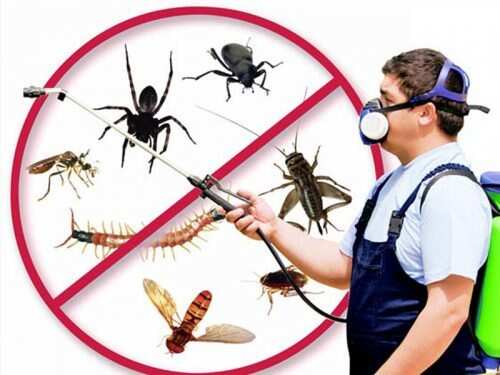The Of Eco Bed Bug Exterminators Dc
The Of Eco Bed Bug Exterminators Dc
Blog Article
All About Eco Bed Bug Exterminators Dc
Table of Contents10 Easy Facts About Eco Bed Bug Exterminators Dc DescribedUnknown Facts About Eco Bed Bug Exterminators DcThe Basic Principles Of Eco Bed Bug Exterminators Dc Things about Eco Bed Bug Exterminators DcThe Best Guide To Eco Bed Bug Exterminators Dc
Because pesticides are harmful, they are also potentially unsafe to human beings, animals, other microorganisms, and the setting. Individuals who use pesticides or regularly come in contact with them need to comprehend the relative toxicity, prospective wellness results, and preventative actions to reduce exposure to the products they make use of. Hazard, or risk, of using pesticides is the potential for injury, or the degree of risk included in using a chemical under an offered collection of conditions.
Nonetheless, applicators can reduce or almost get rid of exposure-- and therefore lower danger-- by complying with the tag guidelines, using personal protective clothing and devices (PPE), and managing the chemical effectively. For instance, more than 95 percent of all chemical exposures come from facial exposure, mainly to the hands and forearms. By wearing a pair of unlined, chemical-resistant gloves, this type of direct exposure can be almost removed.
The harmful impacts that happen from a single exposure by any type of course of entry are described "acute results." The four courses of direct exposure are dermal (skin), inhalation (lungs), dental (mouth), and the eyes. Acute poisoning is established by examining the dermal toxicity, breathing poisoning, and oral poisoning of examination pets.
The Basic Principles Of Eco Bed Bug Exterminators Dc
Intense toxicity is gauged as the quantity or focus of a toxicant-- the a.i.-- needed to kill half of the animals in a test populace. This action is typically revealed as the LD50 (lethal dosage 50) or the LC50 (lethal focus 50). Furthermore, the LD50 and LC50 values are based upon a single dose and are tape-recorded in milligrams of pesticide per kilogram of body weight (mg/kg) of the examination animal or partially per million (ppm).
The reduced the LD50 or LC50 value of a pesticide product, the greater its toxicity to human beings and pets. Chemicals with a high LD50 are the least poisonous to people if used according to the directions on the product label. The persistent poisoning of a pesticide is established by subjecting guinea pig to lasting exposure to the active ingredient.
The chronic poisoning of a pesticide is harder than acute toxicity to establish with lab evaluation. Products are classified on the basis of their relative severe poisoning (their LD50 or LC50 values). Pesticides that are identified as extremely hazardous (Poisoning Category I) on the basis of either dental, dermal, or inhalation poisoning should have the signal words threat and toxin published in red with a head and crossbones symbol prominently presented on the front panel of the plan tag.
The severe (solitary dosage) dental LD50 for pesticide products in this team ranges from a trace quantity to 50 mg/kg. As an example, direct exposure of a couple of declines of a product taken by mouth could be deadly to a 150-pound individual. Some pesticide products have just the signal word risk, which informs you absolutely nothing regarding the acute poisoning, simply that the product can trigger extreme eye damages or extreme skin irritability
Our Eco Bed Bug Exterminators Dc Statements
In this category, the acute oral LD50 arrays from 50 to 500 mg/kg. A tsp to an ounce of this material could be fatal to a 150-pound individual (pest control Washington DC). Pesticide products classified as either slightly poisonous or fairly nontoxic (Poisoning Categories III and IV) are required to have the signal word CAUTION on the chemical label

All pesticide toxicity chemical, including the LD50, can be found on discovered product's Item Safety Product Safety and security (MSDS). Chemical tags and MSDS can be gotten from sellers or makes - https://www.figma.com/file/nYxx0Ms9kRuqr8a4ANLhEt/Untitled?type=design&node-id=0%3A1&mode=design&t=IsJx8rZRbtsKtt9p-1. The symptoms of chemical poisoning can vary from a mild skin inflammation to coma or also fatality.
Individuals likewise vary in their sensitivity to different levels of these chemicals. Some people might show no reaction to an exposure that may trigger extreme health problem in others (how to get rid of bed bugs). Due to prospective wellness concerns, pesticide individuals and handlers need to identify the usual symptoms and signs of chemical poisoning. The results, or try these out symptoms, of pesticide poisoning can be generally specified as either topical or systemic.
Eco Bed Bug Exterminators Dc - Questions
Dermatitis, or swelling of the skin, is approved as one of the most commonly reported topical impact connected with chemical exposure. Symptoms of dermatitis variety from reddening of the skin to rashes and/or blisters. Some people often tend to cough, wheeze, or sneeze when subjected to pesticide sprays. Some people respond to the solid odor and bothersome effects of petroleum extracts made use of as providers in chemical items.
This sign generally subsides within a couple of minutes after a person is gotten rid of from the direct exposure to the irritant. A reaction to a pesticide product that causes a person not only to sneeze and cough however likewise to establish serious acute respiratory system symptoms is extra most likely to be a real hypersensitivity or sensitive reaction.
Systemic impacts are quite different from topical effects. They frequently happen away from the initial point of get in touch with as a result of the chemical being absorbed into and distributed throughout the body. Systemic effects often include nausea or vomiting, throwing up, fatigue, migraine, and intestinal tract disorders. In sophisticated poisoning instances, the person may experience modifications in heart price, problem breathing, convulsions, and coma, which can cause fatality.
Report this page